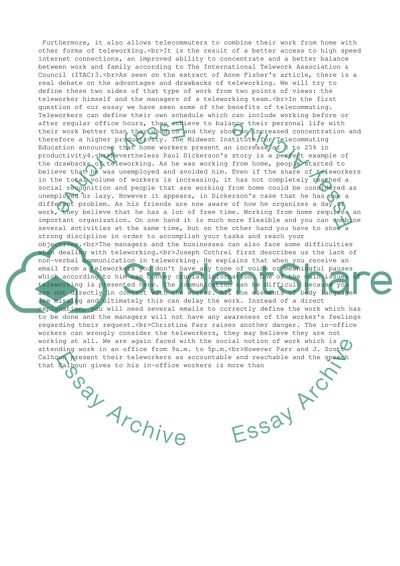Cite this document
(The Advantages and Drawbacks of Teleworking Essay Example | Topics and Well Written Essays - 2750 words, n.d.)
The Advantages and Drawbacks of Teleworking Essay Example | Topics and Well Written Essays - 2750 words. https://studentshare.org/business/1513857-the-advantages-and-drawbacks-of-teleworking
The Advantages and Drawbacks of Teleworking Essay Example | Topics and Well Written Essays - 2750 words. https://studentshare.org/business/1513857-the-advantages-and-drawbacks-of-teleworking
(The Advantages and Drawbacks of Teleworking Essay Example | Topics and Well Written Essays - 2750 Words)
The Advantages and Drawbacks of Teleworking Essay Example | Topics and Well Written Essays - 2750 Words. https://studentshare.org/business/1513857-the-advantages-and-drawbacks-of-teleworking.
The Advantages and Drawbacks of Teleworking Essay Example | Topics and Well Written Essays - 2750 Words. https://studentshare.org/business/1513857-the-advantages-and-drawbacks-of-teleworking.
“The Advantages and Drawbacks of Teleworking Essay Example | Topics and Well Written Essays - 2750 Words”. https://studentshare.org/business/1513857-the-advantages-and-drawbacks-of-teleworking.


